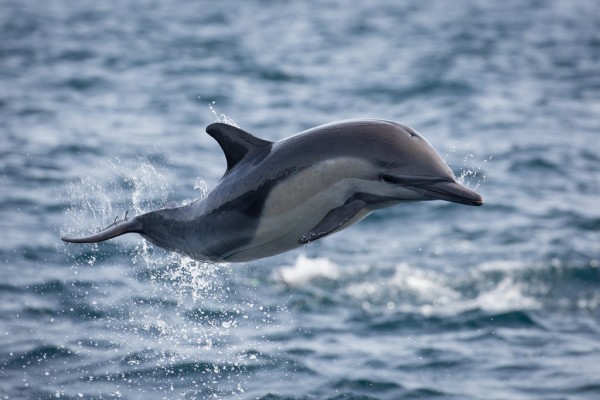By Dane Lorica, | November 18, 2016

Scientists have discovered the fossil of a dolphin in Madagascar. (Flickr)
Scientists have acquired evidence which suggests that dolphins were once present in the Madagascar waters. The fossilized backbone, which is said to belong to an unnamed dolphin species, traces back to the late Miocene epoch about five to nine million years ago.
Like Us on Facebook
Researcher Karen Samonds said, "this exciting discovery marks the first fossil cetacean from Madagascar." Cetacean refers to a group of whales, porpoises, and dolphins.
The vertebra was found in a marine rock on the small island Nosy Makamby, northwest coast of the country in 2010. It dates back to the period after the isolation of the island. Samonds described it as a challenging discovery "when we discovered it, we could tell that it was a vertebra, and there were various characteristics about its shape that could tell us that we were looking at a mammal."
The backbone, which appears slender and long, measures around two inches in width and four inches in length, left Samond's team uncertain of what type of animal it belonged to. The head of the research team said that it was "unlike most terrestrial or land-dwelling mammals." The vertebra appears with a triangular part and a neural spine which suggests that it belonged to a dolphin. This mammal has neural spines that allowed it to rhythmically swim as its backbone bends.
Samonds added that the features of the backbone could be associated with those of modern river dolphins like La Plata River dolphin or franciscana and Amazon River dolphin or boto. She explained that "the boto and franciscana are riverine or estuarine while Madagascar dolphin was marine." However, the researcher noted that both boto and franciscana have similar features with the fossil which suggest that all three species may have a common ancestor in the Western Atlantic region.
Madagascar is listed as a place for fossil hunting. Samond said that "one major impediment to our understanding has been the lack of a Cenozoic fossil record, the time period when many animal groups are thought to have arrived."
Samonds and her team's discovery of the dolphin's fossilized vertebra in Madagascar will help shed light on the unknown Cenozoic period. The study was published in the Society of Vertebrate Paleontology meeting's peer-reviewed journal.
-
Use of Coronavirus Pandemic Drones Raises Privacy Concerns: Drones Spread Fear, Local Officials Say

-
Coronavirus Hampers The Delivery Of Lockheed Martin F-35 Stealth Fighters For 2020

-
Instagram Speeds Up Plans to Add Account Memorialization Feature Due to COVID-19 Deaths

-
NASA: Perseverance Plans to Bring 'Mars Rock' to Earth in 2031

-
600 Dead And 3,000 In The Hospital as Iranians Believed Drinking High-Concentrations of Alcohol Can Cure The Coronavirus

-
600 Dead And 3,000 In The Hospital as Iranians Believed Drinking High-Concentrations of Alcohol Can Cure The Coronavirus

-
COVID-19: Doctors, Nurses Use Virtual Reality to Learn New Skills in Treating Coronavirus Patients







